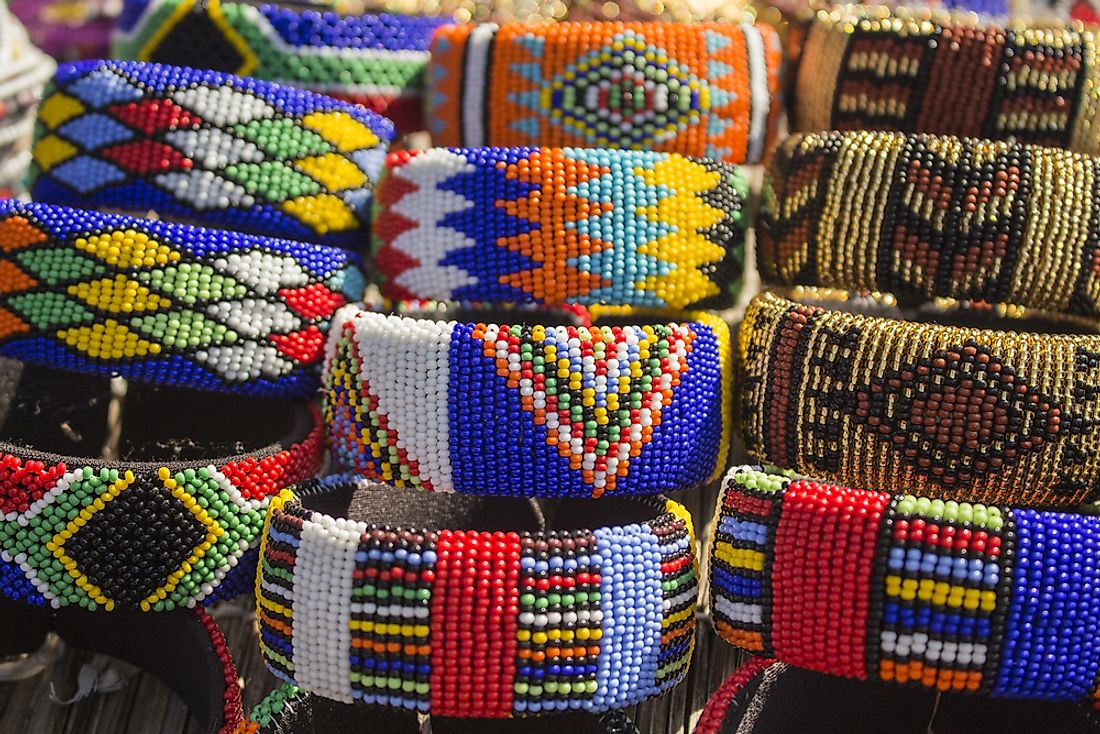Who Are The Xhosa People, And Where Do They Live?

5. Early History and Migrations
The Xhosa people are a Bantu ethnic group residing primarily in the Eastern Cape province of South Africa, as well as other parts of the country to a lesser extent. Related, but distinct, tribal groups and subgroups, like the Mfengu, Mpondo, Xesibe, Bomvana, Thembu, and others, make up the Xhosa population. The Xhosas arrived in South Africa during the great Nguni Migration from the Great Lakes region of Eastern Africa around 2,000 years ago. They replaced the Khoisan hunter-gatherers and occupied vast tracts of land along the basin of the Fish River in eastern South Africa, all the way to the boundaries of Zulu (another Nguni tribe of South Africa) inhabited lands.
4. Language, Religion, and Music
The Xhosas speak the isiXhosa language, a Bantu language closely related to the languages of the other Nguni people. isiXhosa is rich in idioms, respectful addresses for the elderly and in-laws, meaningful names for individuals, and polite titles for Xhosa women. The traditional Xhosas do not practice idol worship, but highly regard their ancestors as their connection with the spiritual world. They accept the existence of a supreme being called uQamata or umDali, whom they regard as the creator of the world. They also believe in the spiritual importance of dreams, sorcery, magic, and witchcraft as well. Christianity was adopted by many of the Xhosa when the European missionaries arrived in their land. Currently, while some Xhosas practice modern Christianity exclusively, most Xhosas practice syncretism, involving an amalgamation of Christianity and traditional tribal beliefs. Like their religious practices, the Xhosa’s musical expressions are highly elaborate, encompassing group singing, dancing, and hand clapping. Drums, whistles, flutes, and rattles alike are used by the Xhosa to create music.
3. Traditional Cuisine, Homes, and Ways of Life
Corn and bread, beef, sheep and goat meat, and a few vegetables, such as beans, rhabe, and imvomvo, constitute the diet of the Xhosas. Milk is often drunk sour as amasi, and sorghum beer is a popular alcoholic beverage. Umngqusho, a dish prepared from hominy corn, beans, and spices, and porridges made from corn, meat, and flour, are other traditional Xhosa dishes. Various traditions are also linked to the Xhosa diet, such as egg consumption being a taboo for Xhosa women, while men are not allowed to consume the milk of the village where he finds his bride. Traditional Xhosa homes are simple and basic in design, usually made of mud, grasses, tree poles, and other natural materials. Round-shaped mud huts are common, and a single household may have one or more of these structures in their own plot of land, as different structures may be meant for separate housing of the elderly, married sons, and for cooking. Currently, however, these mud houses are being replaced by modern housing systems initiated by government efforts to develop the Xhosa villages. Traditional Xhosas have a highly patriarchal society, wherein women are expected to live under the male authority, and shift to their husband’s home after marriage. All the while, men are allowed polygamous marriages. Inheritance is also patrilineal in Xhosa society. Respect for the elderly is highly important among the Xhosas, and the cohabitation of extended families is favored. Young girls and boys are treated according to their sex, and a clear male-female demarcation of tasks exists in the Xhosa society.
2. Tribal Wars and European Persecution
The Xhosas started facing serious trouble during the 18th and 19th Centuries when they engaged in frequent conflicts with the European settlers attempting to annex their native lands. These conflicts, known as the Cape Frontier Wars, were fought between the Xhosas and the rapidly expanding Cape colonists, as well as with the Khoisan-speaking indigenous peoples in the region. However, the traditional Xhosa warfare tactics were no match for the modern European warfare technologies, and the Xhosas soon became second-class citizens in their own homelands. The apartheid movement of racial discrimination subjected the Xhosas to considerable misfortunes and stress, and their settlements were restricted to the Transkei and Ciskei regions in the modern-day Eastern Cape province of South Africa. Xhosa households and ways of life were destabilized when, stricken by extreme poverty under the exploitative apartheid, the Xhosa men were forced to move into the urban centers to work as laborers in the agricultural fields and mines owned by the whites. The end of the apartheid in 1994 finally brought relief to the Xhosas, who then started the process of recovering from years of subjugation and mistreatment.
1. The Xhosa of Today
The Xhosas currently make up about 18% of the population of South Africa. The adverse effects of the apartheid era are still visible among the Xhosas of today, as high rates of poverty, illiteracy, and unemployment continue to plague the Xhosas living in the Easter Cape Province. A gradual improvement in the Xhosa population is, however, being observed, as more children and young adults are entering schools and earning higher degrees to obtain better employment opportunities. Many Xhosas have also left their traditional villages to live in the cities and towns of Guateng province and Cape Town, attracted by the high economic prospects of these regions. As the Xhosas are becoming more dispersed and moving away from their native villages and receiving modern education, many traditional customs, beliefs, and ways of life are at risk of gradually disappearing from the Xhosa world.







